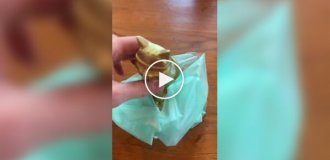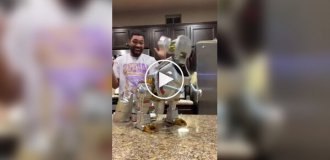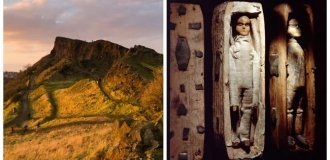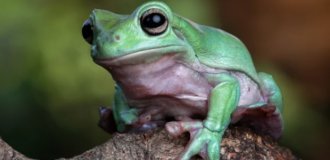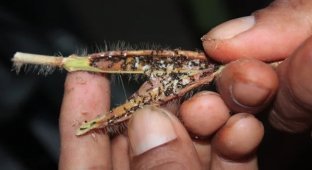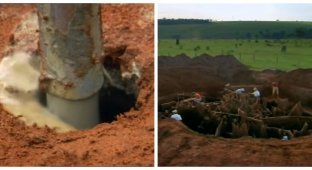Honey ants: they turned their bodies into barrels for storing sweets and swelled 5 times (10 photos)
Honey ants are not a species, genus, or even a family of insects. They are rather a life form that several unrelated species of ants living in different regions of the planet have come to. 
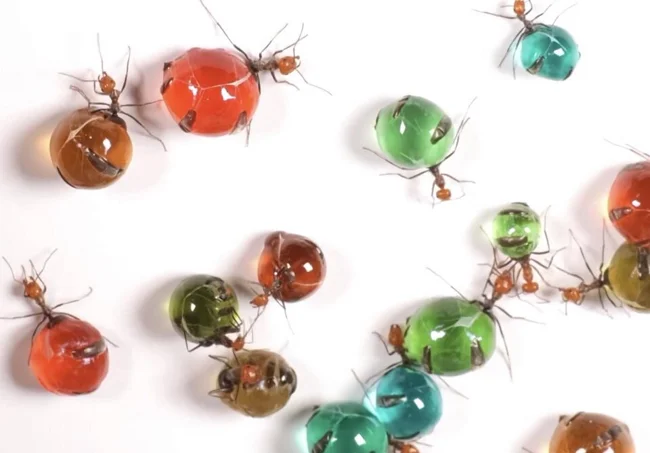
Which flavor will you choose?
Most honey ants are found in Mexico, Australia and Asia. 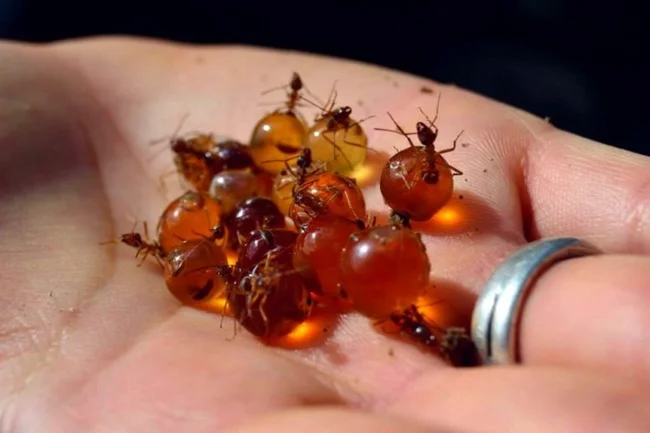
When the candies in your pocket slip out of their wrappers and get a little dirty.
There are 3 varieties of underground grapes in our country. Steppe honey ants are found in Ukraine, the Caucasus, the Belgorod region and southern Siberia. Mongolian honey ants live not only in Mongolia and China. And in 2005, myrmecologists discovered the Ossetian honey ant, which can be found in North Ossetia. 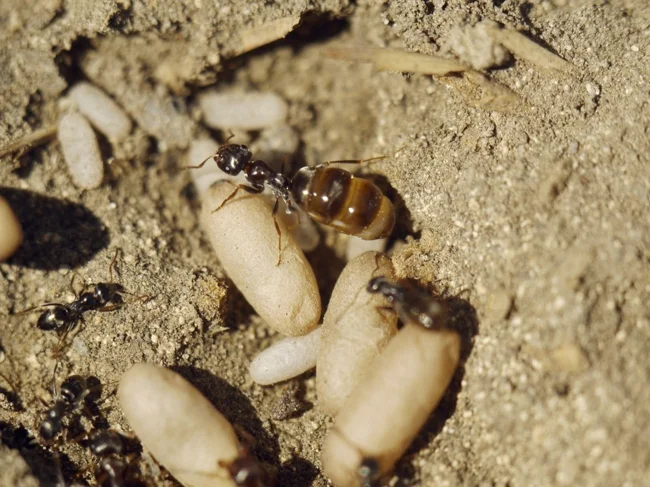
The steppe honey ant in person.
Honey ants choose different places to live, they have different tactics for obtaining food and natural enemies. In fact, they are united by only one thing. All honey ants live in arid regions, which are characterized by seasons with heavy rainfall. 1-3 months a year the region blooms and smells, it is overflowing with food, and the rest of the year nature is poor and cruel. 
Nature may be cruel, but we will always share food ;)
To thrive in such conditions, honey ants created a special caste of workers. They are called replets, pleergates or, to put it simply, honey barrels. Such an ant has one task - to hang under the ceiling of an underground chamber (usually at a depth of 2-3 meters) and work as a food distributor. 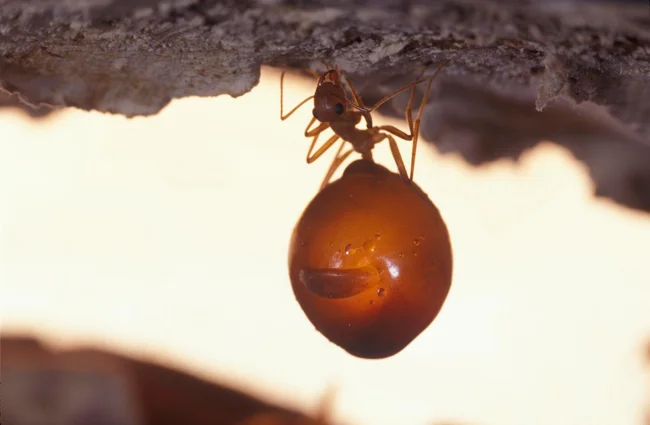
Don't be sad, hang out on the treats!
When there is plenty of food, the replet takes half-digested nectar from the workers, and when there is little, it shares its reserves. The replet themselves hang almost motionless to save as much energy as possible for the workers. To prevent the food from being digested prematurely, they store it not in the stomach, but in an extremely enlarged crop, where it is slowly fermented. 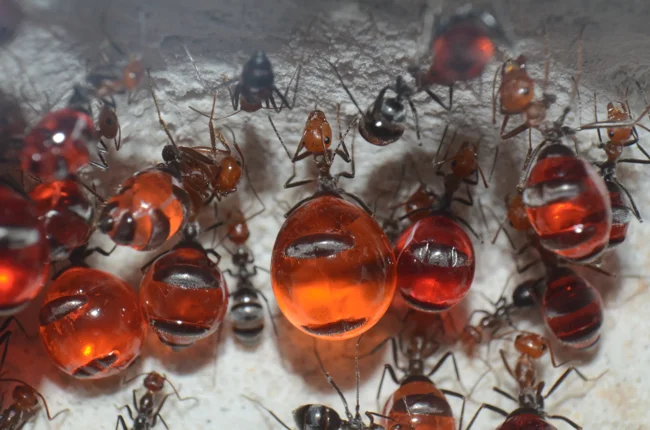
Honey ants can be raised at home, but this is not done often. Their requirements for conditions are too specific.
And the supplies do not spoil thanks to special substances that suppress the growth of yeast, mold, staphylococci and a number of other harmful organisms. The aborigines of Africa and Australia have long considered honey from honey ants to be medicinal, and, it turns out, they have good reason for this. 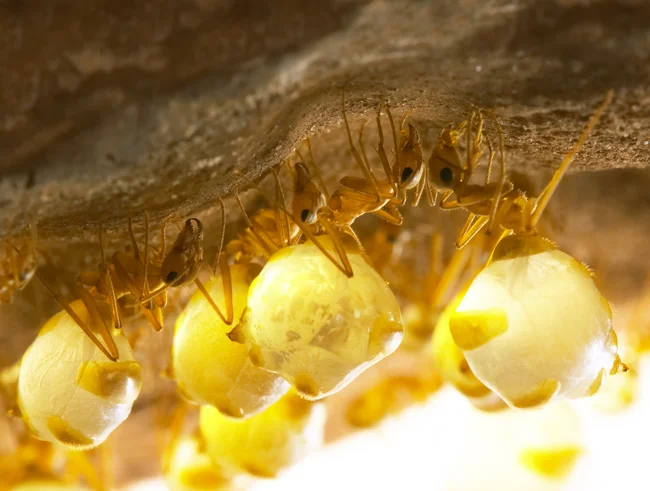
There's ambrosia!
The largest ants always fall into the caste of pleurergata, because their crops are larger. But the volume of nectar stored by a family also depends on the specific species. Australian ants try the hardest - they can turn up to half of the population of the anthill into refrigerators, and the insects themselves can swell 5-6 times. But the underground grapes are very small and there is always little of it, because the ants live in relatively good conditions. 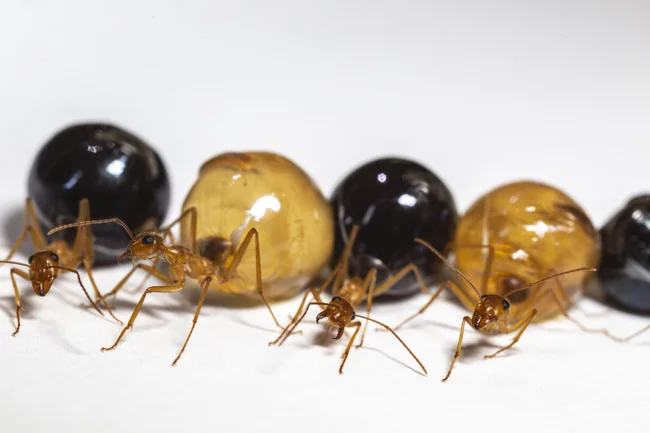
Honey ants have a very short shelf life, so they are not bred for sale.
And all this, of course, is very informative, but the information above does not answer the most important question: what do honey ants taste like? Basically, the ant "filling" tastes like honey, only more liquid and with a slight sourness. The rest depends on the specific ant. If the plerragata was fed flower nectar, then you will feel a pronounced floral/fruity flavor. If it contains aphid or scale insect honeydew, then it will be rather neutral-sweet. Some honey barrels are not honey at all, because African and Australian replets can store pure water. And the nectar of ants fed with half-digested insect meat or even carrion has a less sweet but richer taste and thick consistency. 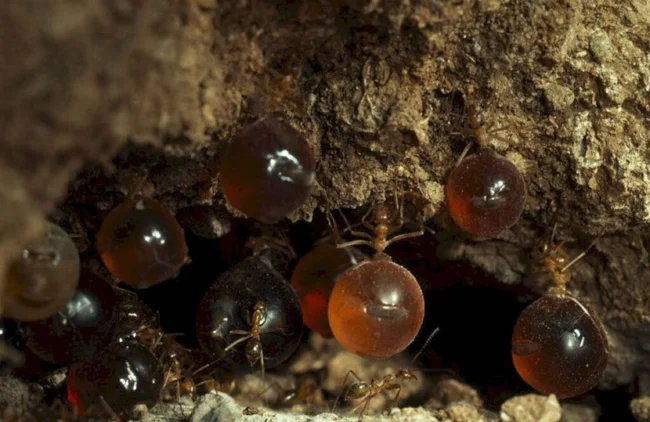
The color of the ant depends on the composition of the nectar. The darker it is, the more impurities it contains, obtained from nectar or fruit. But ants with meat "broth" inside have a milky color.
So, if you have the opportunity, be sure to try honey ants. And don't worry, their contents are sterile and safe for humans, regardless of their origin!


